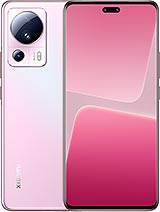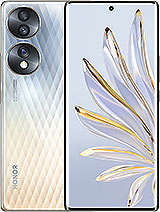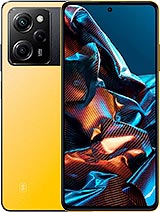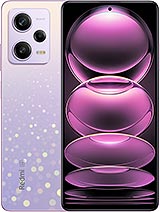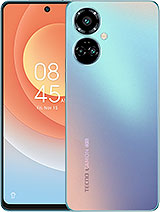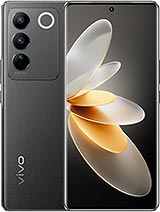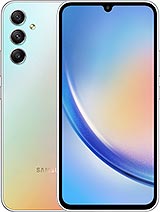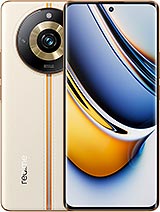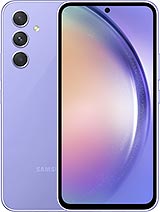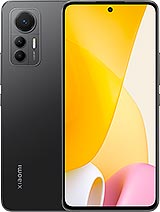Tecno Camon 20 Premier review

6.67-inch, 120Hz AMOLED
In keeping with the Camon pedigree, the Camon 20 Premier has a large 6.67-inch AMOLED display that looks pretty impressive on paper with its 120Hz refresh rate. Things start looking a bit less impressive once you start testing the panel's performance, though.

In terms of brightness, the Camon 20 Premier only managed around 493 nits maximum on the slider. The phone does offer an automatic brightness boost toggle in settings which managed to output a maximum of 684 nits in our testing. That's alright to get by outdoors, but don't expect to be using the Camon 20 Premier comfortably under direct sunlight.
On the plus side, being an OLED, the panel still delivers perfect inky blacks and theoretically infinite contrast.
The Camon 20 Premier has two color modes to choose from in settings - original and bright, plus a color temperature slider. Both modes target the DCI-P3 color space and are pretty cold and blue out of the box, particularly bright mode, which blasts the blue channel.
It's not all bad news, though. Stick to the default original color mode and warm up the colors some using the slider (ideally to the position in the screenshot). You can get pretty accurate DCI-P3 color reproduction with good coverage and deltaE values low enough for the panel to be considered color-accurate.

Optimal color settings for accuracy
The Camon 20 Premier has no HDR support on its display. It does have hardware decoding capabilities to handle HDR10, HDR10+ and HLG. No Dolby Vision support. We are also happy to say that the phone has the highest possible Widevine L1 DRM certification, allowing services like Netflix to offer up FullHD streams and saturate the phone's display.



HDR decoding • Widevine DRM • Netflix playback capabilities
High refresh rate handling
The Camon 20 Premier has a 120Hz refresh rate display. As per software reporting, it supports 60Hz, 90Hz and 120Hz modes of operation. In terms of settings, the phone has a total of four modes - 60Hz, 90Hz, 120Hz and Auto switching.

The 60Hz mode works as you would imagine. It just locks the refresh rate at 60Hz. 90Hz and 120Hz modes are a bit different than that. The overarching logic that these modes apply is one based on motion on display. While there is any motion on display, 90Hz mode works at 90Hz, and once the motion stops, the phone drops down to 60Hz.












UI and apps working at 90Hz mode
Unfortunately, the same motion-based logic is also getting applied to video player apps during actual playback, which leads to wasting power by playing videos at 90Hz instead of 60Hz.
Certain apps just work at 60Hz regardless of your choice to use a higher refresh rate mode.


Some apps still working at 60Hz
120Hz mode works in much the same way 90Hz mode does. You get 120Hz while there is motion on the screen, and once that is gone, the phone drops down to 60Hz.
That's not bad logic overall, but there is the obvious issue of video being played at a high refresh rate (120Hz in this case) which still remains.



Video players working at 120Hz
Automatic refresh rate switching mode works very similarly to the other two modes as well. The overarching core logic is the same - you get 120Hz while there is motion on screen and 60Hz otherwise.








UI and apps in Auto refresh rate mode
The one big positive difference the Auto switching mode seems to bring to the table is video playback detection. We noticed that video player apps no longer operate on motion-based logic and work at 60Hz instead, which is the desired behavior.



Video players working in Auto refresh rate mode
We did observe some per-app weirdness in Auto refresh rate mode, though. For instance, the Techo Hi Browser works at 120Hz, whereas Chrome is limited to 60Hz. Oddly enough, the Gmail app all of a sudden decided to follow the motion-based logic and work at a max of 120Hz in Auto refresh rate mode, which was not the case with the other modes.




App weirdness in Auto refresh rate mode
Of course, we tried high refresh rate gaming with a few titles we know can render past the 60fps mark. Auto refresh rate mode didn't manage to handle high refresh rate gaming all that well. Just one out of the four games actually triggered 120Hz, which is not a good result.




Gaming in Auto refresh rate mode
On a more positive note, the 120Hz refresh rate mode did a lot better with high refresh rate gaming, managing to run three out of the four games at 120Hz.
Overall, Tecno has a solid foundation in place when it comes to high refresh rate handling. The core motion-based logic is a good start, and it tends to work very well and consistently across the UI, which is good. We also appreciate the added video playback logic present in Auto refresh rate mode. However, high refresh rate gaming is far from perfect and needs some more work. In the current state, our advice would be to use your phone in Auto mode most of the time and manually switch to 120Hz mode specifically for games that support frame hates beyond 60fps.
Battery life
The Camon 20 Premier has a solid 5,000 mAh battery pack. This is actually the first time we are seeing the MediaTek Dimensity 8050 in our lab, but we do still have some frame of reference to go by for expectations. Given that the new 6nm chip is quite similar to both the Dimensity 1200 and 1300, we expect it to manage similar battery endurance.
And indeed, the battery life on the Camon 20 Premier can best be described as "dependable" without being spectacular in any way. Just like its siblings, the Dimensity 8050 is a decently-efficient chip.
The phone managed a total endurance rating of 107 hours in our standardized proprietary testing.
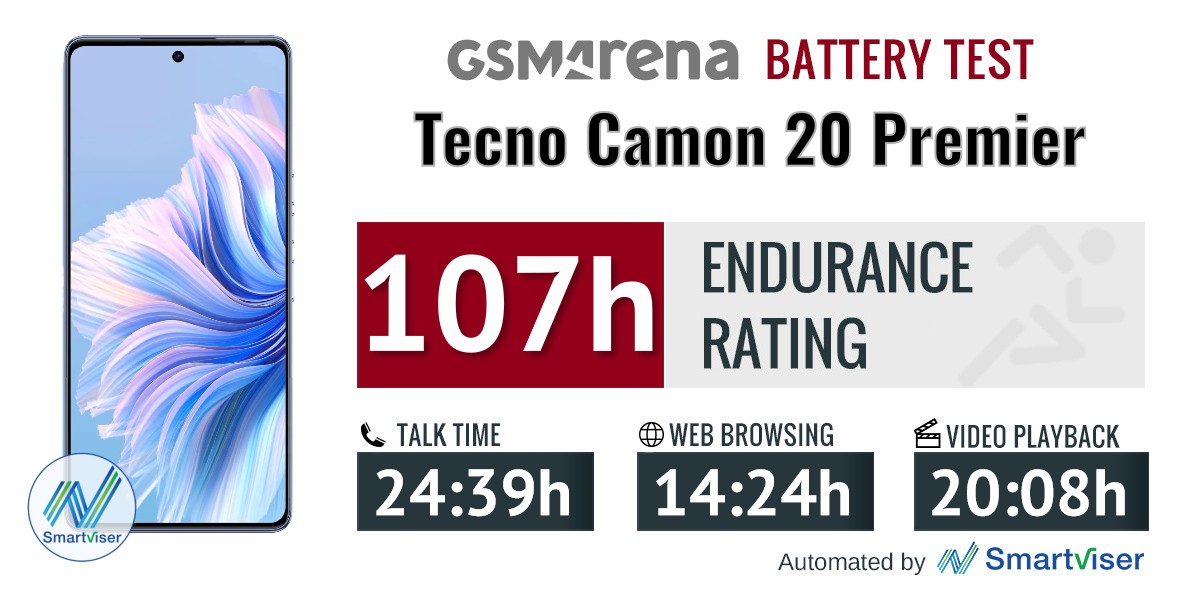
As a reminder, the web browsing portion of our testing was conducted at the phone's top 120Hz refresh rate mode, while the video test part was done at 60Hz.
Our battery tests were automated thanks to SmartViser, using its viSerDevice app. The endurance rating denotes how long the battery charge will last you if you use the device for an hour of telephony, web browsing, and video playback daily. More details can be found here.
Video test carried out in 60Hz refresh rate mode. Web browsing test done at the display's highest refresh rate whenever possible. Refer to the respective reviews for specifics. To adjust the endurance rating formula to match your own usage patterns check out our all-time battery test results chart where you can also find all phones we've tested.
Charging
The Camon 20 Premier supports 45W fast charging. You get the required Infinix charger in the box. It is rated for a standard output of 5V@2A as well as 11V@4.1A max.

The Camon 20 Premier is not a particularly fast charger. Despite the good charging speeds on paper, the phone takes a hot minute to top off. As per our testing, the Camon 20 Premier god from zero to 26% in fifteen minutes and then 47% in thirty minutes. A full charge took 1:14 hours to complete.
The Camon 20 Premier also has what Tecno calls "AI Smart Charge". It works much like the QNOVO system, optimizing overnight charging to charge the battery slowly up to a point and then wait before pumping in a full charge just before you wake up. This should ensure better longevity for the battery overall and is a much-appreciated feature.
Speakers
The Camon 20 Premier has a hybrid stereo speaker system with an amplified earpiece acting like the second channel. That's a pretty common thing for phones in this price range.
As already mentioned, Tecno has put some extra effort into ensuring better sound output for the earpiece by including a speaker grill on the top bezel.

Even so, the stereo setup on the Camon 20 Premier is not particularly well-balanced. The dedicated bottom speaker is noticeably louder with a wider sound stage than the earpiece. In terms of loudness, the Camon 20 Premier managed a "GOOD" score in our testing but is a bit quieter than some of its competitors. Not by a lot, though.
The Camon 20 Premier has a pretty clean audio output that doesn't get distorted even at high volumes. Highs are pretty crisp, and mids sound good as well. There is pretty much no bass, but that's expected.
There is a DTS Sound optimizer on board the Camon 20 Premier with a few audio presets and a basic equalizer. It gets the job done but is nothing too in-depth. The Camon 20 Premier also supports Hi-Res AUDIO and Hi-Res AUDIO WIRELESS as well as DTS.
Use the Playback controls to listen to the phone sample recordings (best use headphones). We measure the average loudness of the speakers in LUFS. A lower absolute value means a louder sound. A look at the frequency response chart will tell you how far off the ideal "0db" flat line is the reproduction of the bass, treble, and mid frequencies. You can add more phones to compare how they differ. The scores and ratings are not comparable with our older loudspeaker test. Learn more about how we test here.
Reader comments
- Estee Whyte
- 12 Nov 2024
- XBF
Same here. Despite being an AMOLED display, the colors on the Camon 20 are annoyingly dull. Any remedy for this??
- Addis
- 11 Sep 2024
- Ng}
Camon 20 premier is water proof??
- Korky 2
- 15 Jul 2024
- fu%
Am using a tecno camon 20 premier and my camera is very bad but the version is the latest one but I don't know what else to do
